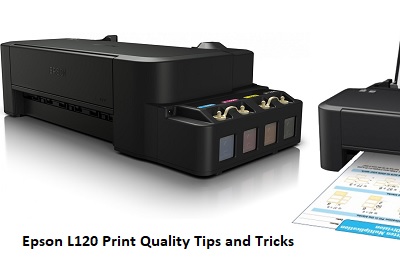Epson L120 Print Quality Tips: Tips and tricks for achieving the best print quality with the Epson L120, including settings and paper recommendations. The Epson L120 is a popular inkjet printer known for its affordability and reliability. While it is not a high-end model, it is capable of producing good quality prints when used correctly. In this article, we will explore various tips and tricks for achieving the best print quality with the Epson L120, including settings and paper recommendations.

Epson L120 is, a reliable inkjet printer capable of producing high-quality prints when used correctly. By following these tips and tricks, such as using genuine Epson ink, choosing the right paper, adjusting print settings, and maintaining your printer, you can consistently achieve the best print quality for your documents and photos. Remember that proper care and attention to detail can make a significant difference in the performance of your Epson L120 printer.
Understanding the Epson L120 Print Quality
Before diving into print quality tips, it’s important to understand the basic components and features of the Epson L120:
- The ink tank system: The Epson L120 uses an ink tank system, which means you can easily monitor and replenish ink levels. This system is cost effective and provides consistent print quality.
- Print Resolution: The L120 has a maximum print resolution of 720 x 720 dpi, which is sufficient for most home and small office printing needs.
- Ink quality: Epson’s proprietary inks are designed to work seamlessly with the L120, ensuring vibrant colors and sharp text.
Now, let’s look at some tips for maximizing the print quality of your Epson L120.
1. Epson L120 Print Quality | Use genuine Epson ink
One of the most important factors in achieving high-quality prints is the use of genuine Epson ink cartridges. These cartridges are specifically designed to work with your printer, ensuring accurate color reproduction and longevity. Generic or third party inks may save you money initially, but may result in poor print quality and potential printer problems in the long run.
2. Selecting the Right Paper
Your choice of paper can have a significant impact on print quality. For everyday printing, plain paper is fine. However, for special projects or photos, consider using Epson-recommended photo papers, such as Epson Premium Glossy Photo Paper. These papers are optimized for inkjet printing and produce vibrant, sharp images.
3. Adjust print settings
Epson printers, including the L120, offer a variety of print settings that allow you to customize output to suit your needs:
- Print quality: For standard documents, you can select “Text” or “Text and Image” print quality settings. For photos or high-resolution graphics, select Best Photo or Photo mode for optimal results.
- Color settings: Depending on your preferences and the nature of your document, you can adjust color settings such as saturation and contrast. Experiment with these settings to get the output you want.
- Paper Type: Always select the appropriate paper type in your printer settings to ensure that ink is applied correctly. This helps prevent ink bleeding and smudging.
Borderless printing: If you want your photos to go all the way to the edge of the paper, turn on borderless printing, This is especially useful when creating photo prints.
4. Keep your printer clean
Regular maintenance is important for print quality. Clean the print head and the inside of the printer as recommended in the User’s Guide. Dust and dried ink can accumulate over time and affect print quality. Be sure to follow Epson’s cleaning guidelines to avoid damaging sensitive components.
5. Epson L120 Print Quality | Check ink levels
Always monitor your ink levels and refill or replace cartridges as needed. Printing with low ink levels can result in faded or streaky prints. The Epson L120’s ink tank system makes it easy to check and replenish ink levels.
6. Update your drivers and firmware
Make sure you have the latest printer drivers and firmware updates installed. These updates often include performance enhancements and bug fixes that can improve print quality.
7. Test print before final print
Before printing a large batch of documents or photos, it’s a good idea to test print on a plain sheet of paper. This allows you to check the settings and make any necessary adjustments without wasting expensive photo paper.